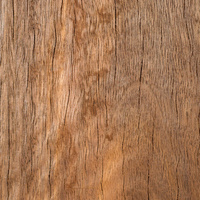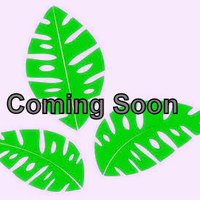Common name: Narrow Leaf Ironbark
Other common names: Grey Ironbark, Narrow Leaf Red Ironbark, Red Ironbark, White Ironbark
Description
Narrow-leaf ironbark is an Australian eucalyptus tree producing durable timber and nectar for honey production.
Its natural range extends over a wide area, from warm-temperate parts in the country's southeast to the tropical north and usually occurs in dry open woodland, either in pure stands or mixed in with other tree species.
It is slow-growing to up to 20 m (65 ft) tall, though it is occasionally taller under ideal conditions. It develops a straight branch-free trunk for more than half the tree height, supporting a moderately leafy, irregular crown. The bark on mature trees is dark grey to near-black, deeply furrowed and ridged.
The leaves are typical of Eucalyptus species, being dark green and with a long, narrow, blade-like shape that, in this species, is up to 15 cm (6 in) long. They remain on the tree in all seasons.
The flowers are small, with long white stamens set in a goblet-shaped base and in clusters that come into bloom from winter to summer. They are followed by dry, woody seed capsules containing many tiny seed of variable shape and colour.
Use
Narrow-leaf ironbark produces a heavy wood, averaging around 1,000 kgs per cubic meter (62 lbs per cubic foot), with high natural resistance to rot, decay and marine exposure. This puts it in the durable hardwood class, suitable for indoor and outdoor construction, including in coastal areas.
The sapwood is yellowish or pinkish-white, and the heartwood is red-brown. Large, well-formed logs are sawn into beams and planks used for heavy construction, including house construction, bridge and wharf construction, railway sleepers, external flooring and decking, and outdoor furniture. Small-diameter round-wood lengths are cut for poles, fence posts and for fuel-wood, including firewood and wood for making charcoal.
The flowers yield reasonable amounts of pollen for brooding honeybees and nectar for honey production, with estimates of up to 73 kg (160 lbs) of honey produced per colony per season. It is reported as one of the primary nectar sources for honeybees over a large part of its range in Australia. The honey is substantial in body, with a mild, sweet flavour, extra white to light amber colour and is slow to granulate to a coarse, whitish grain. The flowers are also a good source of pollen for brood-rearing honeybees.
Climate
Grows naturally in sub-humid to moderately humid subtropical and tropical climates, generally areas with annual lows of 10 to 23°C, annual highs of 23 to 34°C, annual rainfall of 600 to 2000 mm and a dry season of 3 to 7 months.
Growing
New plants are usually started from seed, which remain viable for several years if stored under cold, dry airtight conditions. Trees perform best on free-draining loam and sand soils of an acid to neutral nature, generally with a pH of 5.5 to 7.0, and on sites with full to partial sun exposure.
Problem features
The Hawaii Pacific Weed Risk Assessment (HPWRA) project and the IFAS Assessment of Non-Native Plants in Florida's Natural Areas have assessed it as a low to moderate weed risk for Hawaii and Florida.
The roots are moderately invasive, with 6 metres (20 ft) the minimum recommended planting distance away from underground pipes, paved areas or building foundations.
Where it grows
References
Books
-
Blake, S. T. & Roff, C. 1987, The honey flora of Queensland, 3rd ed., Queensland Department of Primary Industries (QLD DPI), Brisbane
-
Boland D.J., Brophy J.J. & House A. P. N. 1991, Eucalyptus leaf oils, use, chemistry, distillation and marketing, Australian Centre for International Agricultural Research (ACIAR) & Commonwealth Scientific Industrial Research(CSIRO), Inkata Press, Melbourne
-
Boland, D. & Brooker, I. & McDonald, M. W. 2006, Forest trees of Australia, 5th ed., CSIRO Publishing (Ensis), Melbourne
-
Clemson, A. 1985, Honey and pollen flora, New South Wales Department of Agriculture, Inkata Press, Melbourne
-
Crane, E., Walker, P. & Day, R. 1984, Directory of important world honey sources, International Bee Research Association, London
-
Leech, M. 2013, Bee Friendly: A planting guide for European honeybees and Australian native pollinators, Rural Industries Research and Development Corporation (RIRDC), Canberra, Australian Capital Territory
-
Liegel, L. H. 1987. A technical guide for forest nursery management in the Caribbean and Latin America, U.S. Dept. of Agriculture, Forest Service, Southern Forest Experiment Station, New Orleans
-
Randall, R. P. 2002, A global compendium of weeds, R.G. and F.J. Richardson Press, Melbourne
-
Randall, R. P. 2007, The introduced flora of Australia and its weed status, Cooperative Research Centre for Australian Weed Management, Glen Osmond, South Australia
-
Roecklein, J. C & Leung, P.S. 1987, A Profile of economic plants, Transaction Books, New Brunswick, New Jersey
-
Streets, R. J. & Troup, R. S. 1962, Exotic forest trees in the British Commonwealth, Oxford University Press, Oxford, England
-
Webb, D. B. 1984, A Guide to species selection for tropical and sub-tropical plantations, 2nd ed., Unit of Tropical Silviculture, Commonwealth Forestry Institute, University of Oxford, Oxfordshire



